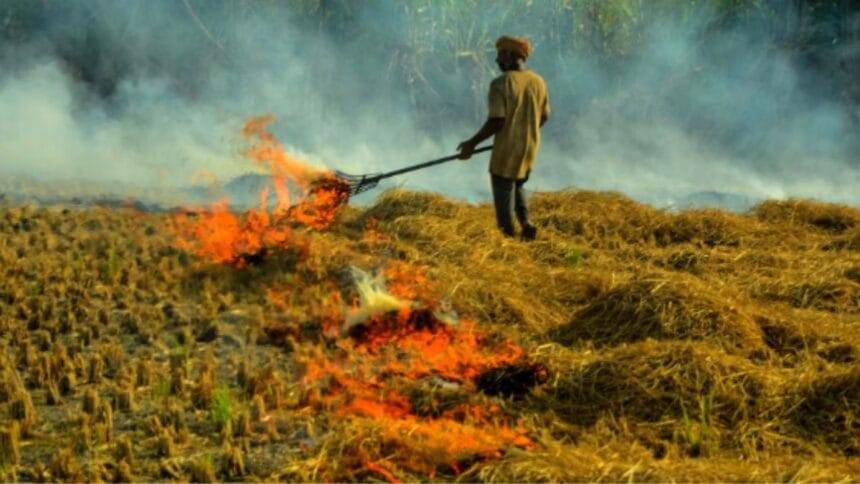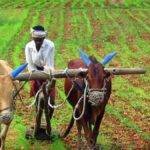Main Points In Hindi (मुख्य बातें – हिंदी में)
यहां पिछले लेख के मुख्य बिंदुओं को हिंदी में प्रस्तुत किया गया है:
-
जलने वाली घटना की संख्या: इस वर्ष हरियाणा में 15 सितंबर से 14 अक्टूबर के बीच 468 जलने की घटनाएं दर्ज की गई हैं, जो 2020 के बाद की सबसे उच्च संख्या है। इसी अवधि में 2023 में 374, 2022 में 102 और 2021 में 389 मामले रिपोर्ट किए गए हैं।
-
क्षेत्रीय आंकड़े: कैथल में 75, कुरुक्षेत्र में 71, अंबाला में 51 और अन्य जिलों में क्रमशः 50 कर्नाल, 42 जिन्दा, 36 सोनीपत, 24 fatehabad, 22 पानीपत, और 20-20 यमुनानगर और पलवल में जलने की ज्यादा घटनाएं देखी गई हैं।
-
वायु प्रदूषण मुद्दा: किसान हर साल धान की कटाई के बाद स्टबल जलाते हैं, जिससे दिल्ली-एनसीआर में धुंध बनती है और वायु गुणवत्ता में गिरावट आती है। इसके परिणामस्वरूप, अधिकारियों को GRAP के तहत गतिविधियों पर प्रतिबंध लगाने पड़ते हैं।
-
कृषि प्रबंधन की चुनौतियाँ: विशेषज्ञों का कहना है कि सरकार ने कृषि अग्नियों की घटनाओं को कम करने के लिए उपाय किए हैं, लेकिन छोटे किसान मशीनरी के लिए दूसरों पर निर्भर रहते हैं, जिससे उनकी कृषि प्रक्रियाओं में देरी होती है और वे मजबूरी में स्टबल जलाने के लिए प्रेरित होते हैं।
- धान की खेती और कृषि अवशेष: इस वर्ष हरियाणा में 38.9 लाख एकड़ में धान की खेती की गई है, जिसके तहत 81 लाख टन कृषि अवशेष उत्पन्न हुए हैं। कृषि विभाग के अधिकारी के अनुसार, आग से घटनाओं को कम करने के प्रयास किए जा रहे हैं और किसानों को अनुदानित मशीनरी प्रदान करने की कोशिश की जा रही है।
Main Points In English(मुख्य बातें – अंग्रेज़ी में)
-
Increase in Stubble Burning Incidents: Haryana reported a significant rise in stubble burning incidents, with 468 cases recorded from September 15 to October 14, 2023, marking the highest number since 2020. In contrast, previous years saw 374 cases in 2023, 102 in 2022, and 389 in 2021.
-
Impact on Air Quality: The annual practice of burning crop residues, particularly after paddy harvesting, contributes to severe air pollution in the Delhi-NCR region. As a response, the Commission for Air Quality Management (CAQM) implemented Phase 1 of the Graded Response Action Plan (GRAP) to restrict construction activities and waste burning in the region.
-
Challenges for Farmers: Although the government provides measures to reduce stubble burning, the accessibility of machines like the Happy and Super Seeder remains limited, particularly for small and medium farmers. This leads to delays in managing crop residue and forces many farmers to resort to burning stubble.
-
Paddy Cultivation Statistics: In 2023, paddy was cultivated over 38.9 lakh acres in Haryana, generating an estimated 81 lakh tonnes of crop residue, most of which is susceptible to burning. Efforts are ongoing to provide subsidized machinery to help farmers manage this residue effectively.
- Trend in Active Fire Outbreaks: Data indicates a decrease in active fire outbreaks in Haryana over recent years, with 2,303 reported in the 2023 Kharif season, down from 3,661 in 2022 and 6,997 in 2021. However, the reduction is still insufficient to significantly improve air quality in the region.


Complete News In Hindi(पूरी खबर – हिंदी में)
इस वर्ष, धान की कटाई के बाद हरियाणा में 15 सितंबर से 14 अक्टूबर के बीच 468 पराली जलाने की घटनाएँ दर्ज की गईं। कहा जा रहा है कि 2020 के बाद यह अवधि पराली जलाने के मामलों में सबसे अधिक है। भारतीय कृषि अनुसंधान संस्थान (IARI) के आंकड़ों के अनुसार, 2023 में इस अवधि में 374, 2022 में 102 और 2021 में 389 घटनाएँ रिपोर्ट की गईं। सबसे अधिक 75 घटनाएँ कैथल में हुईं, इसके बाद कुरुक्षेत्र में 71, अम्बाला में 51, करनाल में 50, जिंद में 42, सोनीपत में 36, फतेहाबाद में 24, पानीपत में 22, यमुना नगर में 20, पलवल में 20, फरीदाबाद में 19, हिसार में 11, पंचकुला में 10 और रोहतक में 6 मामले दर्ज किए गए।
टाइम्स ऑफ इंडिया की रिपोर्ट के अनुसार, किसान हर साल धान की कटाई के बाद पराली जलाते हैं। हर साल सितंबर से नवंबर के बीच, हरियाणा, पंजाब और उत्तर प्रदेश में किसान फसल अवशेषों को जलाते हैं ताकि गेहूं की बुआई की जा सके। इससे निकलने वाला धुंआ दिल्ली-एनसीआर में घना कोहरा पैदा करता है, जिससे वायु गुणवत्ता स्तर घटता है। इस स्थिति में अधिकारियों को GRAP के तहत पाबंदियाँ लगानी पड़ती हैं। सोमवार को वायु गुणवत्ता प्रबंधन आयोग (CAQM) ने GRAP का चरण 1 लागू किया, जिससे दिल्ली, हरियाणा और उत्तर प्रदेश में निर्माण और विध्वंस गतिविधियों पर रोक लगाई गई। इसके अलावा, कचरे जलाने की घटनाओं पर भी प्रतिबंध लगाया गया।
पराली जलाने के लिए मजबूर
विशेषज्ञों का कहना है कि सरकार ने कृषि अग्नि की घटनाओं को कम करने के लिए कदम उठाए हैं। हालांकि, इस वर्ष धारणी के स्ट्रॉ का प्रबंधन करना बहुत मुश्किल है क्योंकि फसल बहुत अच्छी हुई है। हैप्पी और सुपर सीडर जैसी मशीनें इस समस्या से निपटने में प्रभावी हैं, लेकिन सर्वेक्षण बताते हैं कि ये सभी के लिए आसानी से उपलब्ध नहीं हैं। सेंटर फॉर स्टडी ऑफ साइंस, टेक्नोलॉजी एंड पॉलिसी (CSTEP) में वायु गुणवत्ता नीति विशेषज्ञ स्वागता डे ने कहा कि समृद्ध गांवों के पास अपनी मशीनें हैं, लेकिन छोटे और मध्यम किसान दूसरों पर निर्भर रहते हैं। इससे देरी होती है, और किसानों को पराली जलाने के लिए मजबूर होना पड़ता है।
38 लाख एकड़ में फैली धान की खेती
सरकारी आंकड़ों के अनुसार, इस वर्ष राज्य में 38.9 लाख एकड़ में धान की खेती की गई, जिससे लगभग 81 लाख टन फसल का अवशेष पैदा हुआ। इसमें से अधिकांश जलाए जा सकते हैं। कृषि विभाग के एक अधिकारी ने कहा कि हम खेतों में आग की घटनाओं को कम करने का प्रयास कर रहे हैं। फसल अवशेषों के प्रबंधन के लिए किसानों को सब्सिडी दी जा रही मशीनें उपलब्ध कराने के प्रयास किए जा रहे हैं। पिछले कुछ वर्षों के आंकड़ों से पता चलता है कि पराली जलाने की घटनाएँ वास्तव में कम हुई हैं, लेकिन फिर भी यह वायु गुणवत्ता में सुधार के लिए पर्याप्त नहीं है। 2023 के खेरिफ सीजन में हरियाणा में 2,303 सक्रिय अग्नि प्रकोप (AFL) दर्ज किए गए, जो 2022 में 3,661 और 2021 में 6,997 थे।
Complete News In English(पूरी खबर – अंग्रेज़ी में)
This year, after the start of paddy harvesting, 468 incidents of stubble burning were recorded in Haryana between September 15 and October 14. It is being said that after 2020, this time the highest number of cases of stubble burning have been reported during this period. According to data from the Indian Agricultural Research Institute (IARI), between September 15 and October 14, 374 cases of stubble burning were reported in the year 2023, 102 cases in 2022 and 389 cases in 2021. At the same time, maximum 75 incidents of stubble burning have been reported in Kaithal. After this, 71 in Kurukshetra, 51 in Ambala, 50 in Karnal, 42 in Jind, 36 in Sonipat, 24 in Fatehabad, 22 in Panipat, 20 in Yamunanagar, 20 in Palwal, 19 in Faridabad, 11 in Hisar, 10 in Panchkula and 6 cases have been registered in Rohtak.
According to the report of The Times of India, farmers burn stubble every year after harvesting paddy. Every year between September and November, farmers in Haryana, Punjab and Uttar Pradesh burn crop residues to sow wheat. The smoke rising from this creates dense fog in Delhi-NCR, due to which the air quality level falls. In such a situation, the authorities have to impose restrictions under GRAP. On Monday, the Commission for Air Quality Management (CAQM) implemented Phase 1 of GRAP, which will restrict construction and demolition (C&D) activities in Delhi, Haryana and Uttar Pradesh. Besides, the incident of burning garbage will also be banned.
Also read- These special varieties of mustard will produce more oil, know when the seeds will be available, read complete details here
forced to burn stubble
Experts say that the government has taken measures to reduce the incidents of farm fires. However, despite this, it is very difficult to manage the paddy straw this year, because the crop has been very good. Machines such as the Happy and Super Seeder are effective in tackling this problem, but surveys show that they are not easily available to everyone. Swagata De, policy expert (air quality) at the Center for Study of Science, Technology and Policy (CSTEP), said that affluent villagers have their own machines, but small and medium farmers depend on others for seeders. This causes delays, forcing farmers to burn stubble.
Paddy has been cultivated in 38 lakh acres
Also, government data shows that this year, paddy was cultivated in 38.9 lakh acres in the state, generating an estimated 81 lakh tonnes of crop residue. Most of these can be burnt. An official of the Agriculture Department said that we are trying to reduce the incidents of fire in the fields. Efforts are being made to provide subsidized machinery to farmers for the management of crop residues. Data over the past few years shows that incidents of stubble burning have indeed reduced, but still not enough to improve air quality. In the 2023 Kharif season, Haryana recorded 2,303 active fire outbreaks (AFL), down from 3,661 in 2022 and 6,997 in 2021.
Also read- PMFBY: 1.5 percent premium will have to be paid for crop insurance, Rs 1.20 lakh will be given on loss, see calculation








